They are hidden all over Oxford and beyond. Outside, amongst the trees of parks and gardens, positioned in courtyards and parking lots. Huge ancient, crowned heads, features blackened with time, hair interlaced with lichen, lips softened by moss, some so weathered it is hard to see there ever was a face shaped out of the blocks of stone. But these great busts of bearded men once served as sentinels to the Sheldonian Theatre on Broad Street in the heart of Oxford. They were guardians to the University’s Parliament House and its ceremonial centrepiece. For though today’s tourists who flock to the Sheldonian to take selfies with the 13 emperors, philosophers, gods, apostles, (nobody can quite decide what exactly they are,) might think that these hirsute heads on pedestals have been there forever, these versions are in truth only 50 years old. There were two generations before them.
And it is these old timers, the ones put out to grass so to speak that I am interested in finding.
The Sheldonian Theatre was built between 1664-9 by a precocious Christoper Wren, the then Oxford Savilian Professor of Astronomy. Modelled on the design of the Roman Theatre of Marcellus from the first century BC, the front, where the begowned enter from within the compounds of the University to receive their degrees is much less grand than the back where our heads are situated, overlooking the street. Carved by the master mason William Byrd, in his yard around the corner in Catte Street where Hertford College is now, they are referred to in the university accounts at the time as Terms. Which is nothing to do with the divisions of the academic year. But is the name given to boundary stones after the Roman deity Terminus (the Greeks called the same things Herms, after Hermes the God of doorways) erected in classical times as protection for temples and houses. Here in the city centre, placed high up on railings, Wren uses them to signify guardianship of the University’s first assembly hall. A physical barrier between town and gown when skirmishes between the two were still prevalent. David Loggan’s engraving of the place made soon after they went up, shows the heads looking sterner, less jovial than their modern-day counterparts. 17th century stone bouncers designed to keep out the riff raff.
Sculpted from local hardwearing Taynton limestone, they lasted nearly 200 years before new less robust Victorian replacements took their places in 1868. By now there were 17. Four more to continue the line to front the Old Ashmolean next door (today the History of Science Museum) and one knocked off to make way for the Clarendon building on the other side. These ones lasted half the time. Eroded by pollution from acid rain and blackened by coal fires, as early as the 1930’s John Betjeman was calling them ‘mouldering busts’ and comparing them to “illustrations of skin diseases in a medical textbook”.
The current lot were remodelled out of heavy duty Clipsham stone by Oxford sculptor Michael Black in 1972. He was once a well-known character around Oxford. I never saw him in anything other than his work clothes, a tall energetic man with stone dust in his hair. He used to organise an alternative May morning on the bridge at Aristotle Lane, with a replica Magdalen tower that chimed, and a large hollow ox he had created to hold the plentiful quantities of local beer dispensed to thirsty revellers from its udders. The same Morris dancers from Headington Quarry attended that accompanied the latest versions of the Sheldonian heads when they were processed from his workshop to Broad Street. It must have been quite an occasion.
They still look in pretty good nick, the detail on the carefully coiffured company distinct, the variety of whiskers and mutton chops on show a manual for local barbers. And though these are replicas of those originals detailed by Loggan, if you come at them from behind, you will find an added extra by their most recent creator. A tiny bird nesting into the leaves of one of their ivy crowns. I like to think it is a blackbird, a reference to Black’s own name as well as that of his forebear, William Byrd. But then again it could be a wren in homage to the building’s famous architect. Whatever, it is a nice touch.
So, what of the heads that went before? Some of the Victorian batch I’d read had been loaded on to the back of a lorry and had promptly fallen apart when they braked abruptly at a traffic light. I vaguely remember a head looking out from a palm tree in Michael Black’s front garden in Chalfont Road. But if this was indeed one it is there no longer. I’d already randomly spotted a first-generation head last summer looking battered but happy in his retirement by a flowering Ceanothus in Wadham gardens. And another (second generation I have since learned) amongst the camelias in the Arboretum at Nuneham Courtenay. Despite being younger, this one seemed sadder. His beard had fallen off, his eyes were unseeing and the empty holes where the railings once pierced his stone skin leave him looking uprooted and unwanted.
It was then that I discovered that a few years back two academics, Katrin Wilhelm and Heather Viles, both from the School of Geography and the Environment had beaten me to it and done their own head hunt, theirs with a view to record urban decay, environmental change and stone conservation over the period of the various sculptures 350-year history. Their research sent me into the Provost’s Rose Garden at Worcester College (behind a locked gate to which a kindly gardener nearby had a key) where one of the two old moss-covered maestros they have now, inspired these words by the poet laureate of his day, Robert Bridges around 1923.
“ .. where in the garden entry
A monstrous effigy stood sentry,
One of those column-heads which Wren
Contracted for at two-pound-ten.”
They seem contented enough and I like it that they have each other for company.
There are apparently four around the boundaries of the playing fields at d’Overbroeck’s School though I’ve not been able to access them, two of which are used as goal posts. And there’s another two in the gardens on the Wormsley Estate, bought when they came up for auction as they occasionally do and displayed as upmarket garden ornaments.
But two I found on my own. An Oxford Sausage reader sent me in the direction of Horspath where he’d heard a head was hiding. And as luck would have it, as I walked up through the village the gates to one of the larger houses were thrown open and there gazing back at me was unmistakenly an old Sheldonian head. Lovingly positioned on his own stone pedestal and looking outwards as if in guardianship of the house. As he was originally purposed. As he was meant to stand. He looked rather astonished to see me. As I was him.
But my favourite find is on a walk up to the nature reserve at Hinksey Heights. Just before the turning to the golf course I stop to take in the magnificent view, made famous by JMW Turner. There are the flagged pinnacles of Magdalen College tower, the spire of St Mary the Virgin, the dome of Radcliffe Camera alongside the rest of our city skyline. Then continuing up the hill, past a low-lying white house, I happen across another of our Sheldonian pensioners. He is standing alone on a gravel drive looking straight at me. His ivy wreath has slipped a bit, one eye is ailing a little, and weeds form a frill around his neckline. But his pointy beard and walrus moustache are still sharply fashioned, his face authoritative and full of expression, his lips slightly parted as if ready for conversation. And though he is turned away from the panorama, I like to think that on a clear night he will up sticks, clamber over the wall and gaze out over the trees towards the place he once stood. Then he will call out to his fellow philosophers scattered in unseen hideaways across the city and its surrounding hills. And they will call back, eager to discuss the latest news and put the world to rights. Before settling back to their silent stoney reveries.
Main picture: A first generation head now in Wadham College gardens
If any Oxford Sausage readers know of the whereabouts of any other old heads please do get in touch.
Details of Heritage Heads, the project led by Katrin Wilhelm and Heather Viles can be found here.
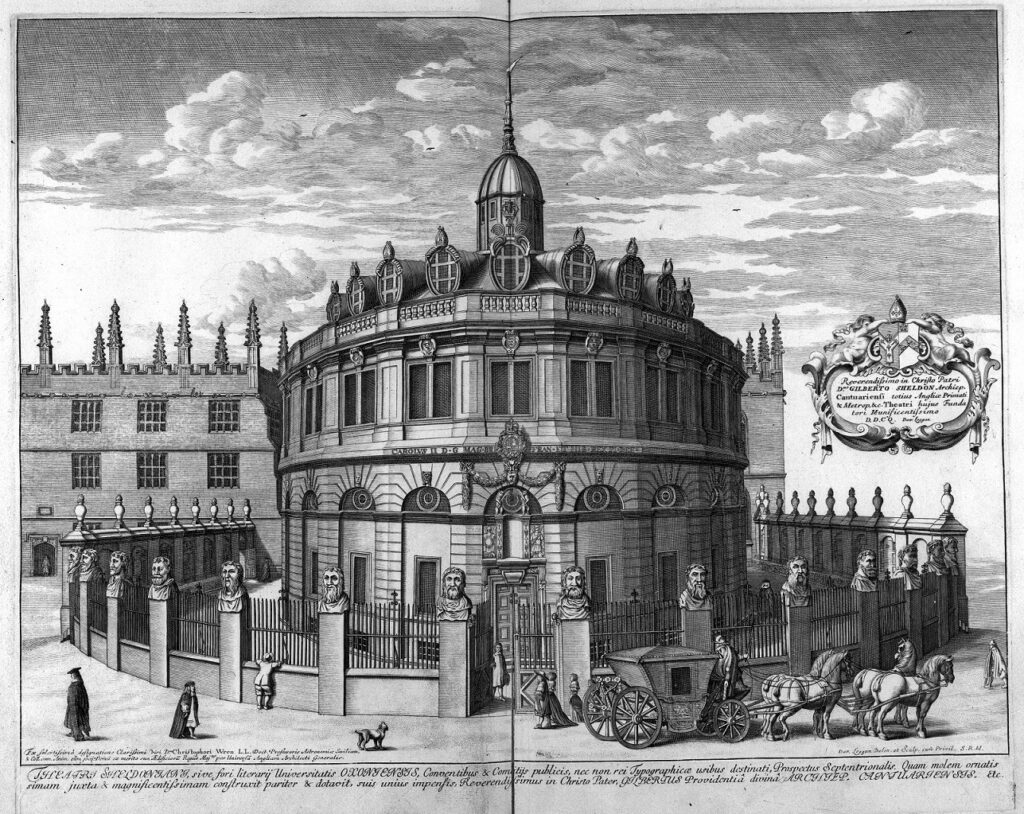
Engraving by David Loggan’s Oxonia Illustrata published in 1675 soon after the completion of the Sheldonian, before the old Ashmolean and The Clarendon Building were erected.
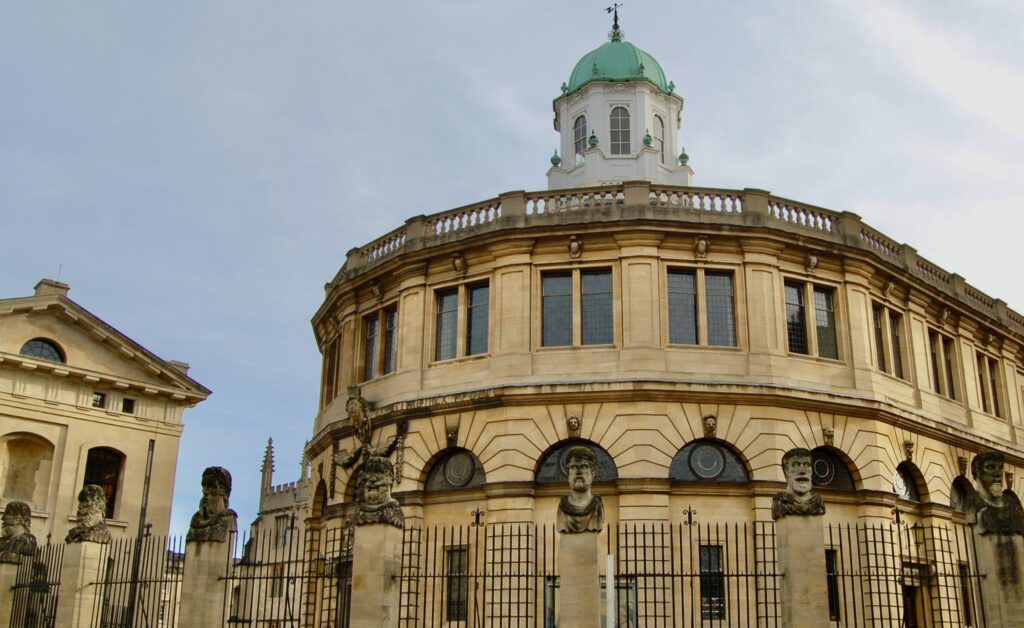
Michael Black’s versions went up in 1972.
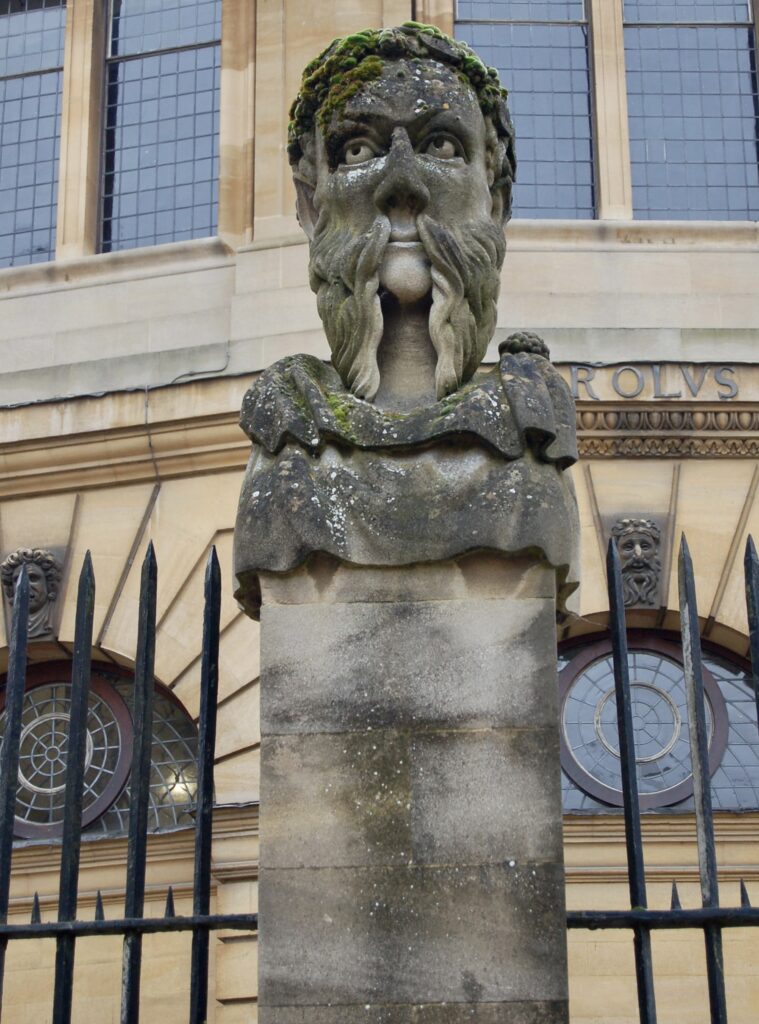
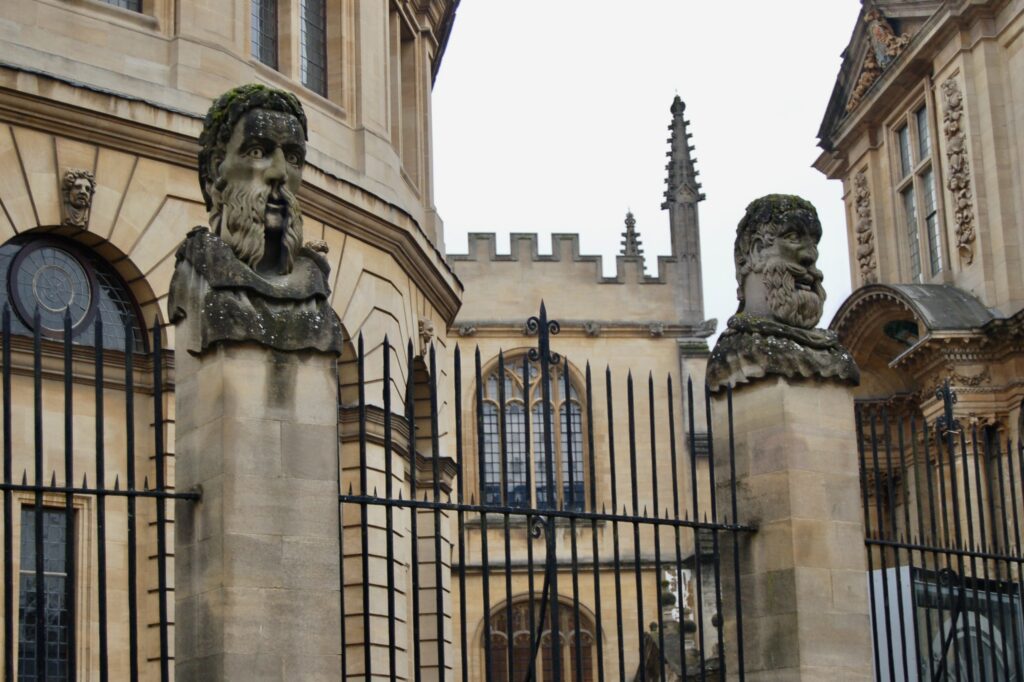
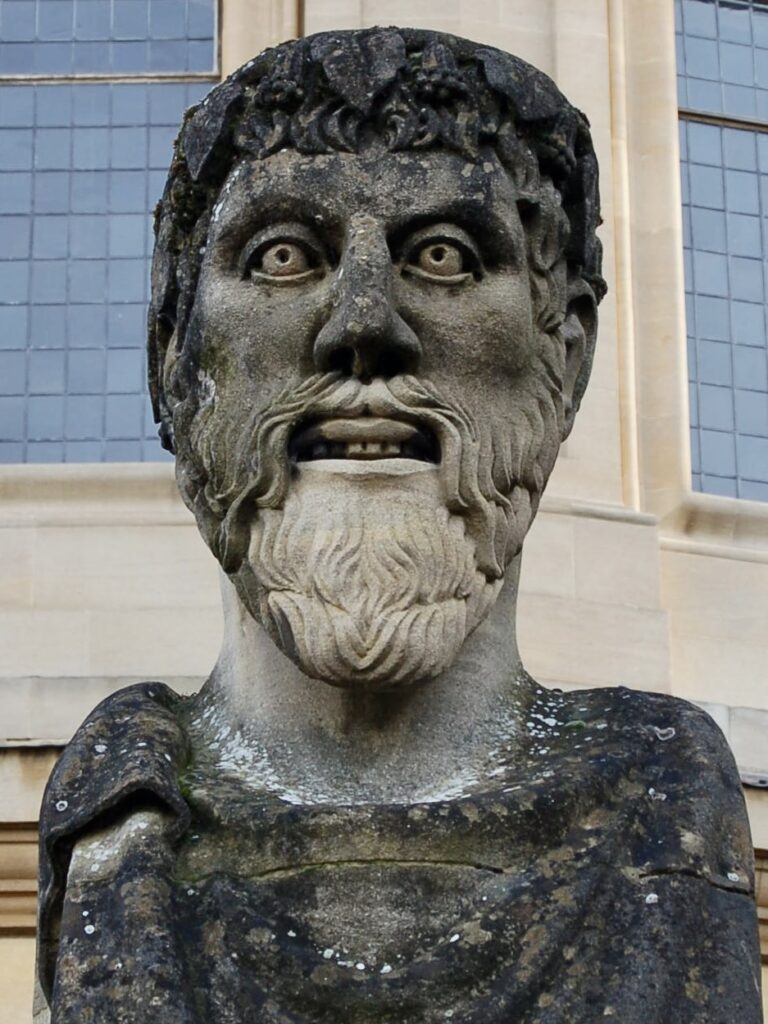
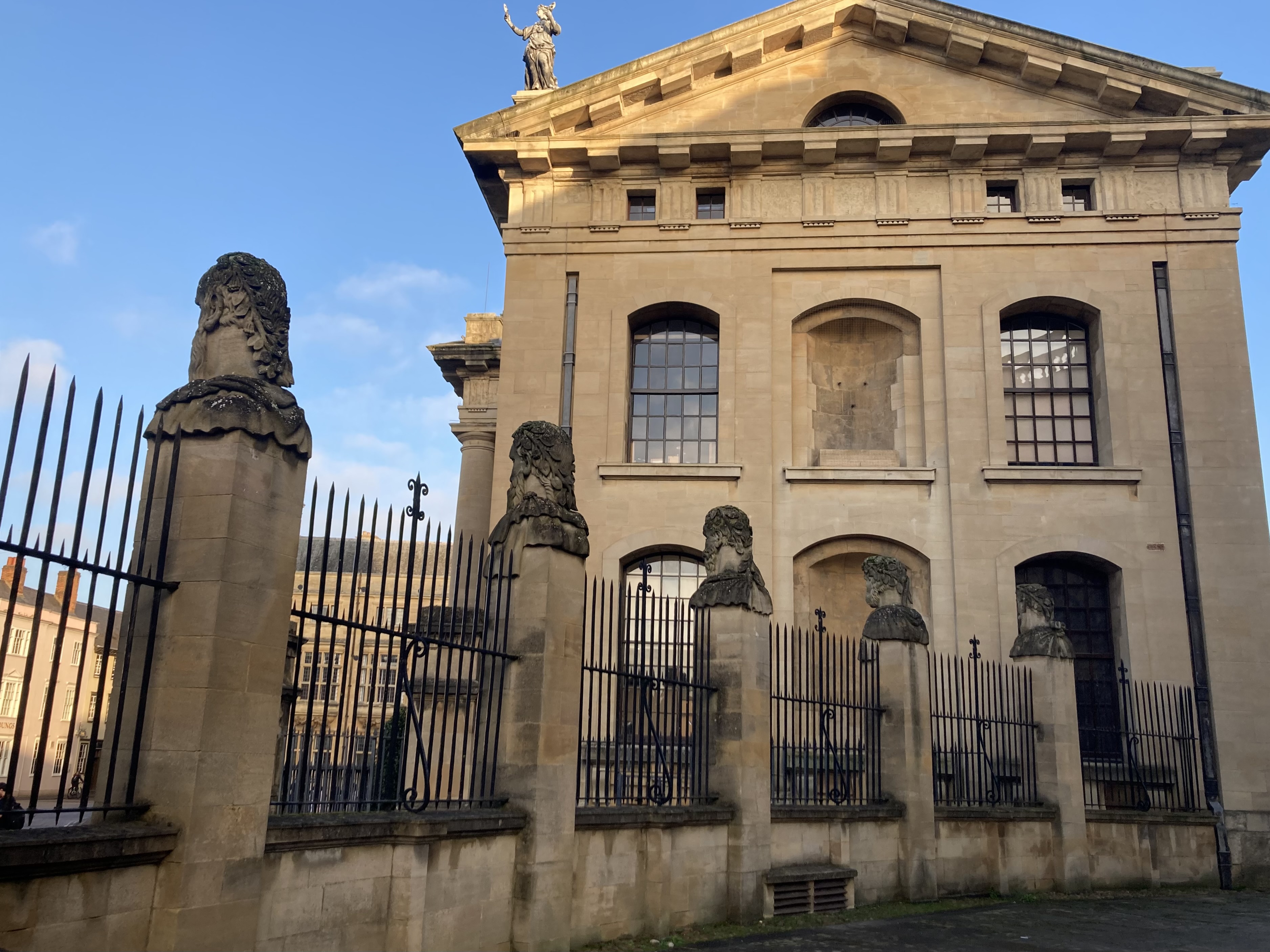
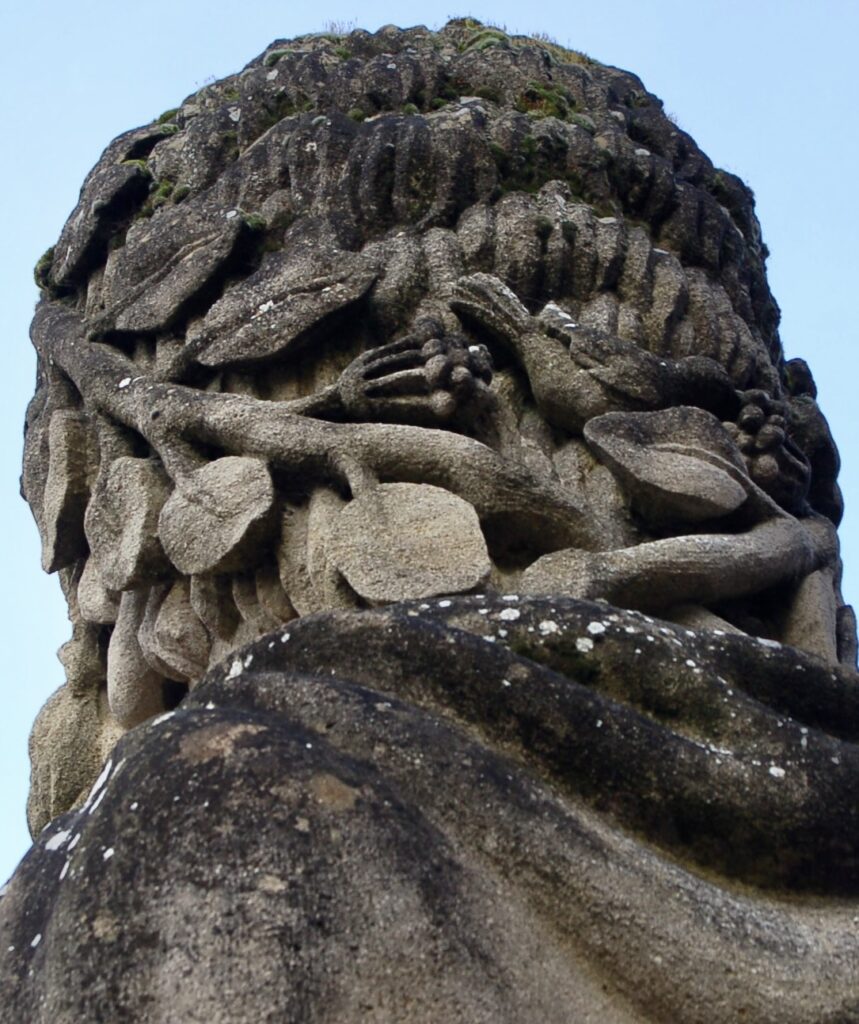
A black bird/wren nestled into the hair references the earlier versions.
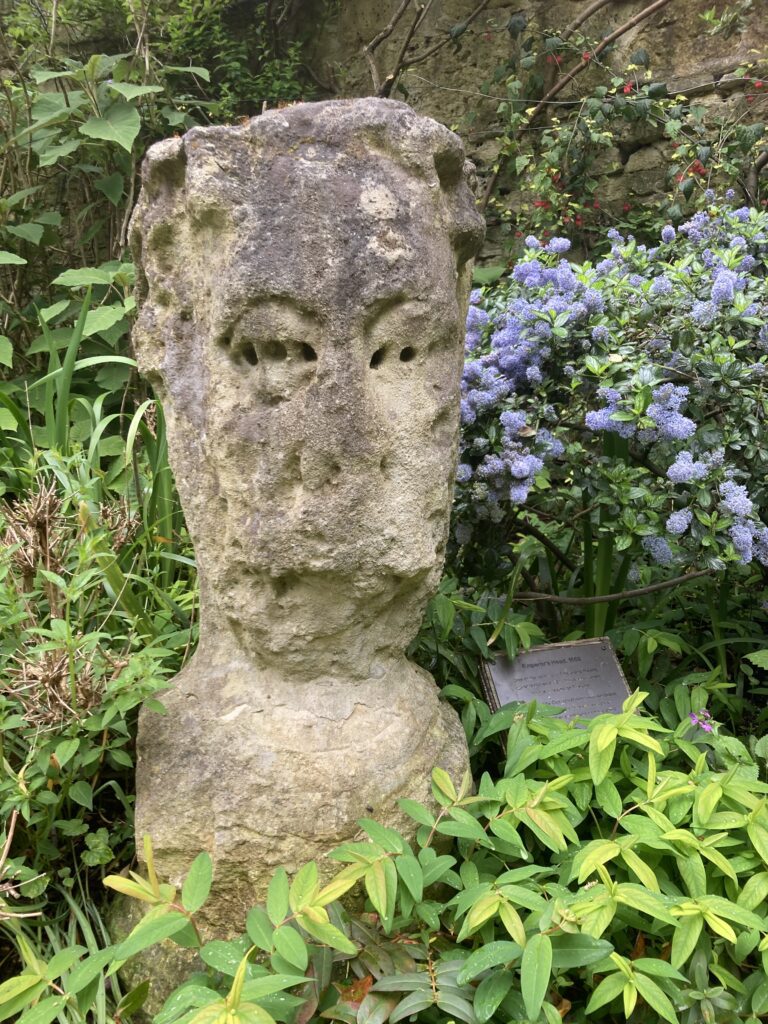
The first old head I spotted was in Wadham College gardens. Most of the features have disappeared making it look as if the head has melted. The plaque says Byrd’s original sculpture was donated to the college by Michael Black’s family.
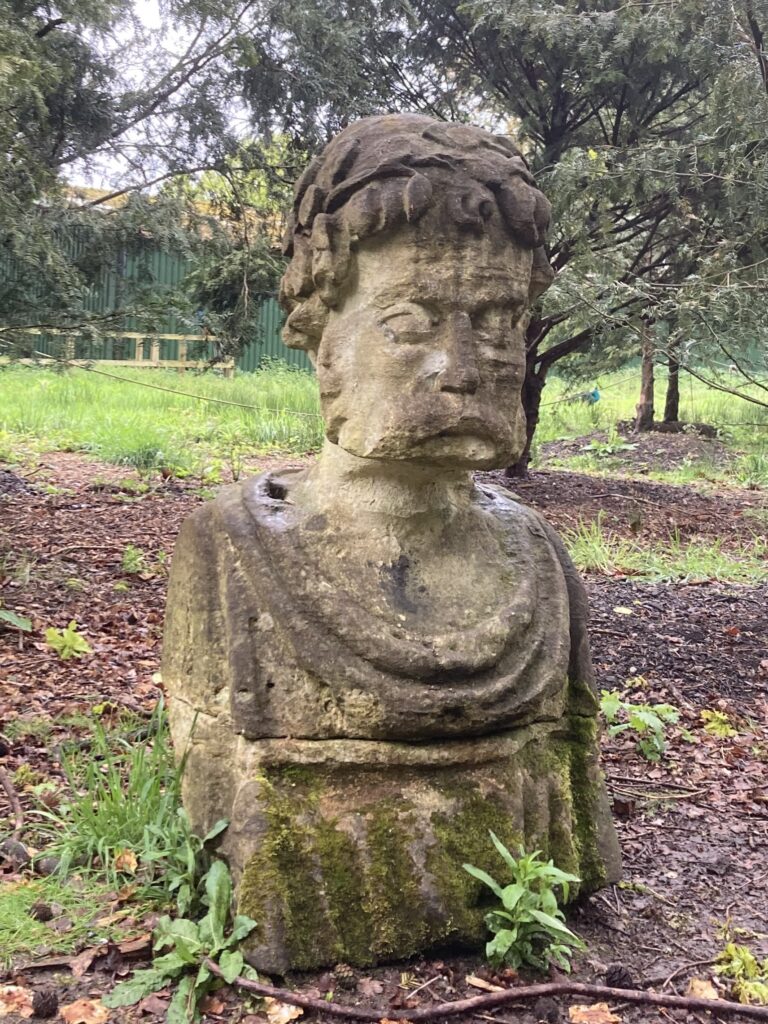
This head was taken from outside what is now the History of Science Museum in Broad Street and now stands in the Arboretum in Nuneham Courtenay. There were many heads here, some not much more than piles of stones and in such poor condition that Katrin Wilhelm and Heather Viles took them to Wytham to be kept safe.
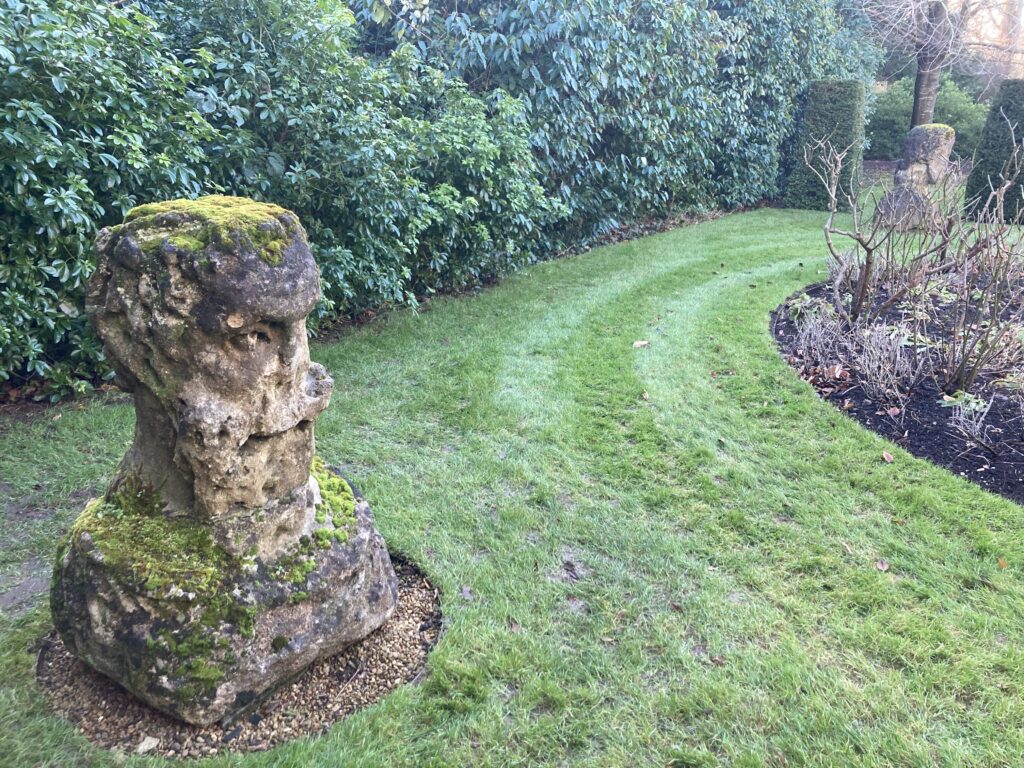
The two heads in the Provost’s garden at Worcester.
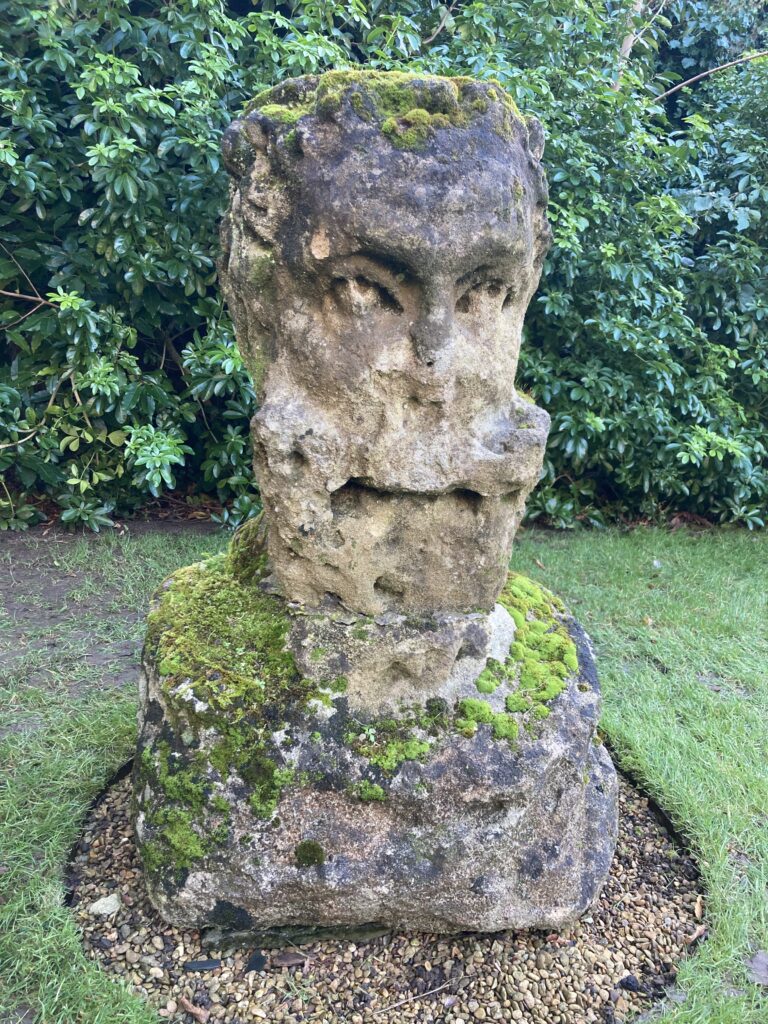
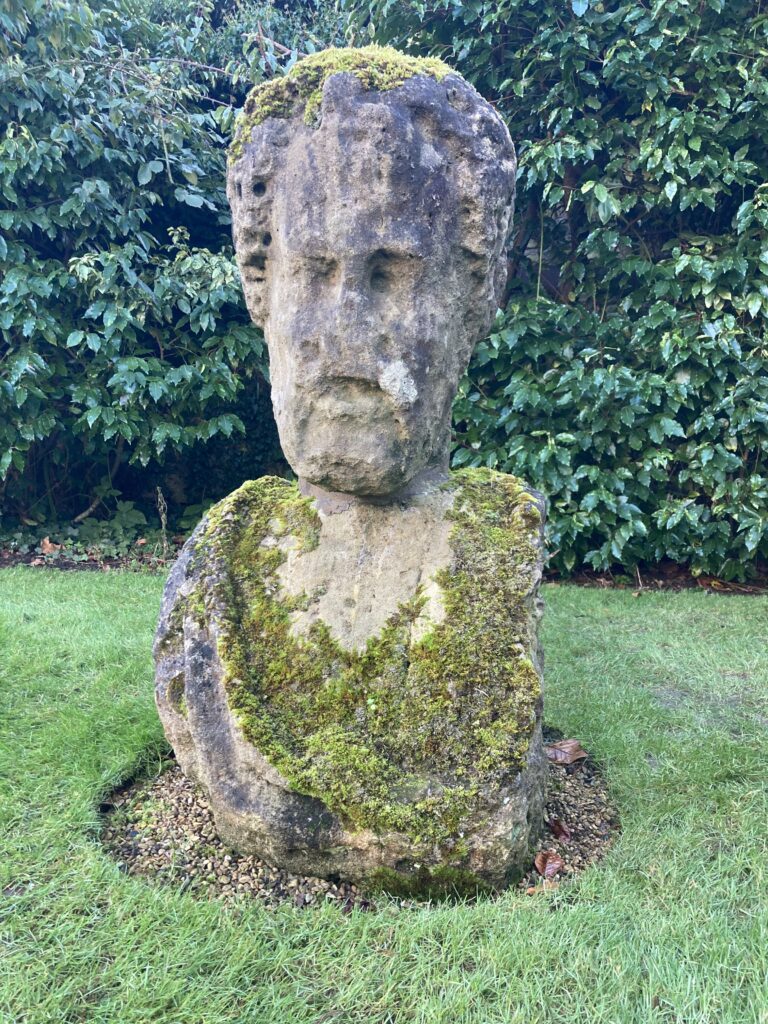
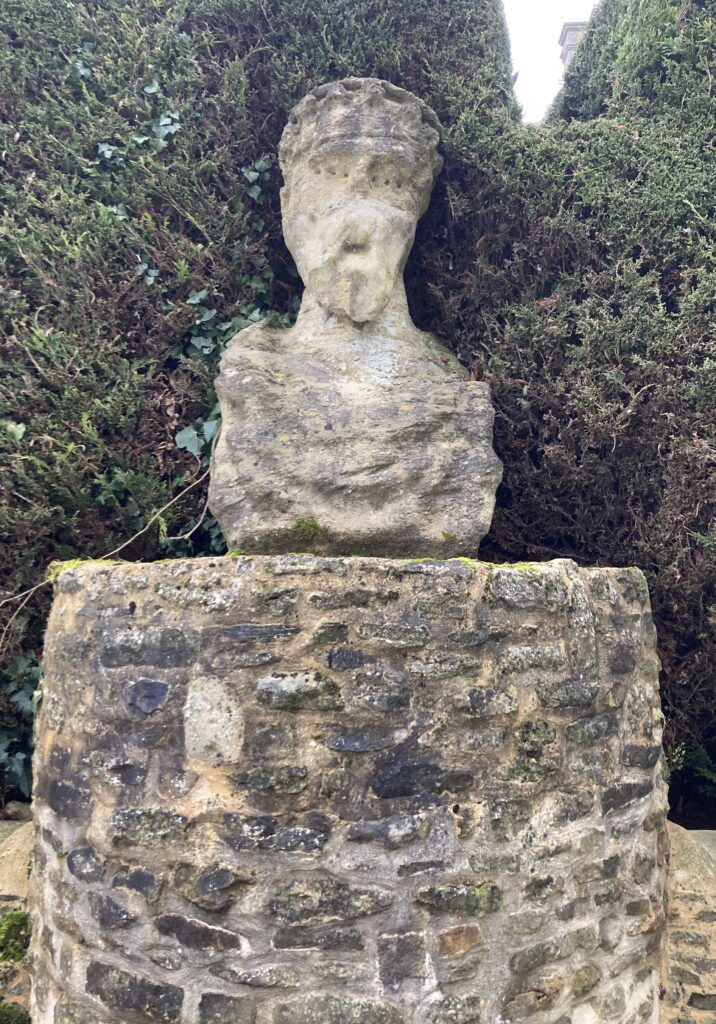
The head at Horspath
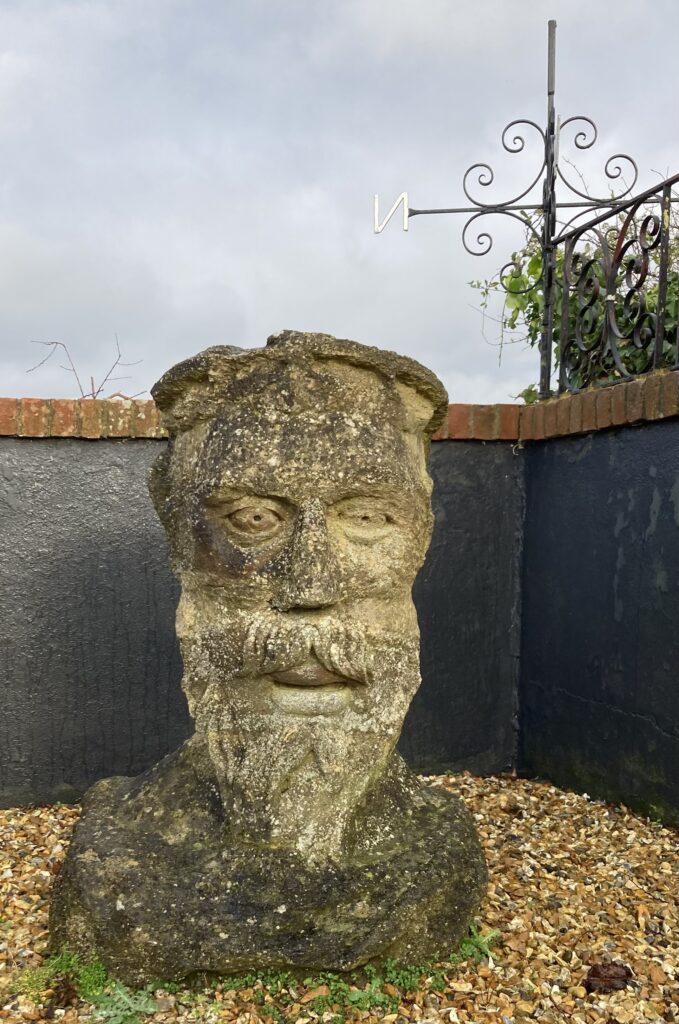
And on the gravel drive at Hinksey Heights.
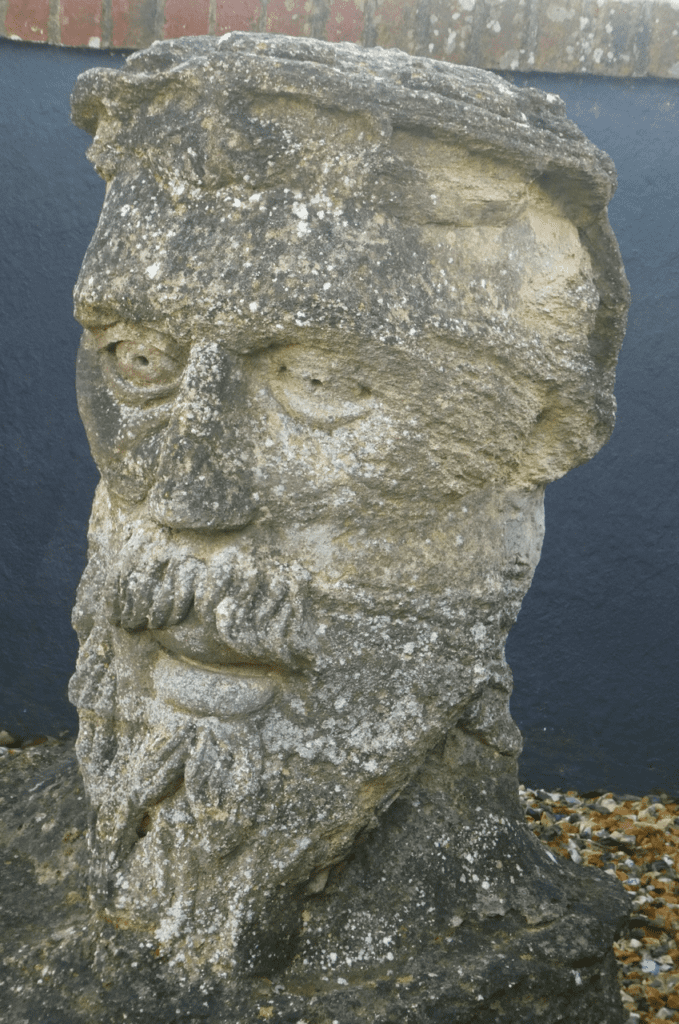
Photo (and below) courtesy of Beatrice Groves.
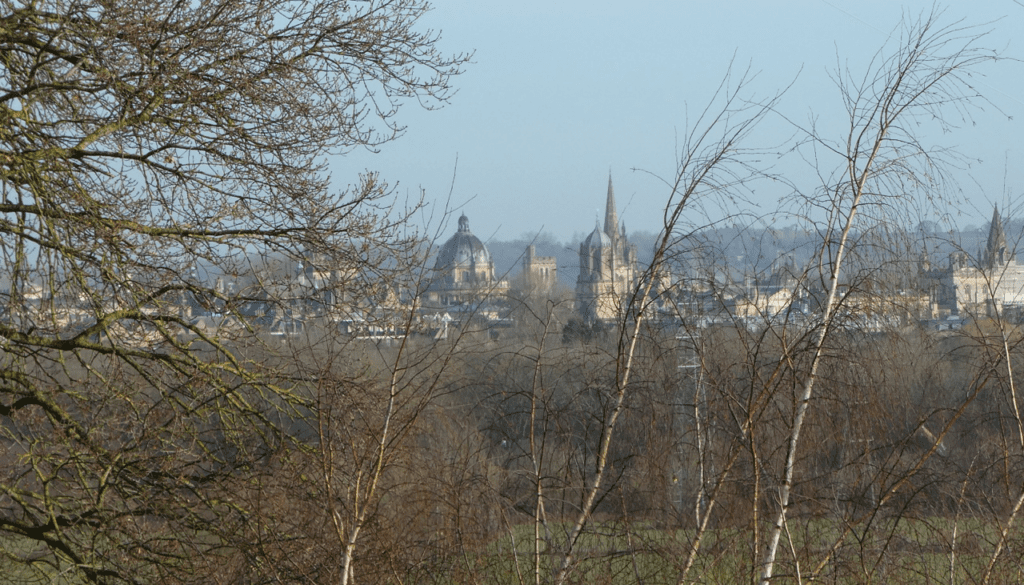
With his views over the city.
Since writing this piece I was sent the photograph below of a very weathered looking head sitting on a pile of stones in a garden in Park Town.
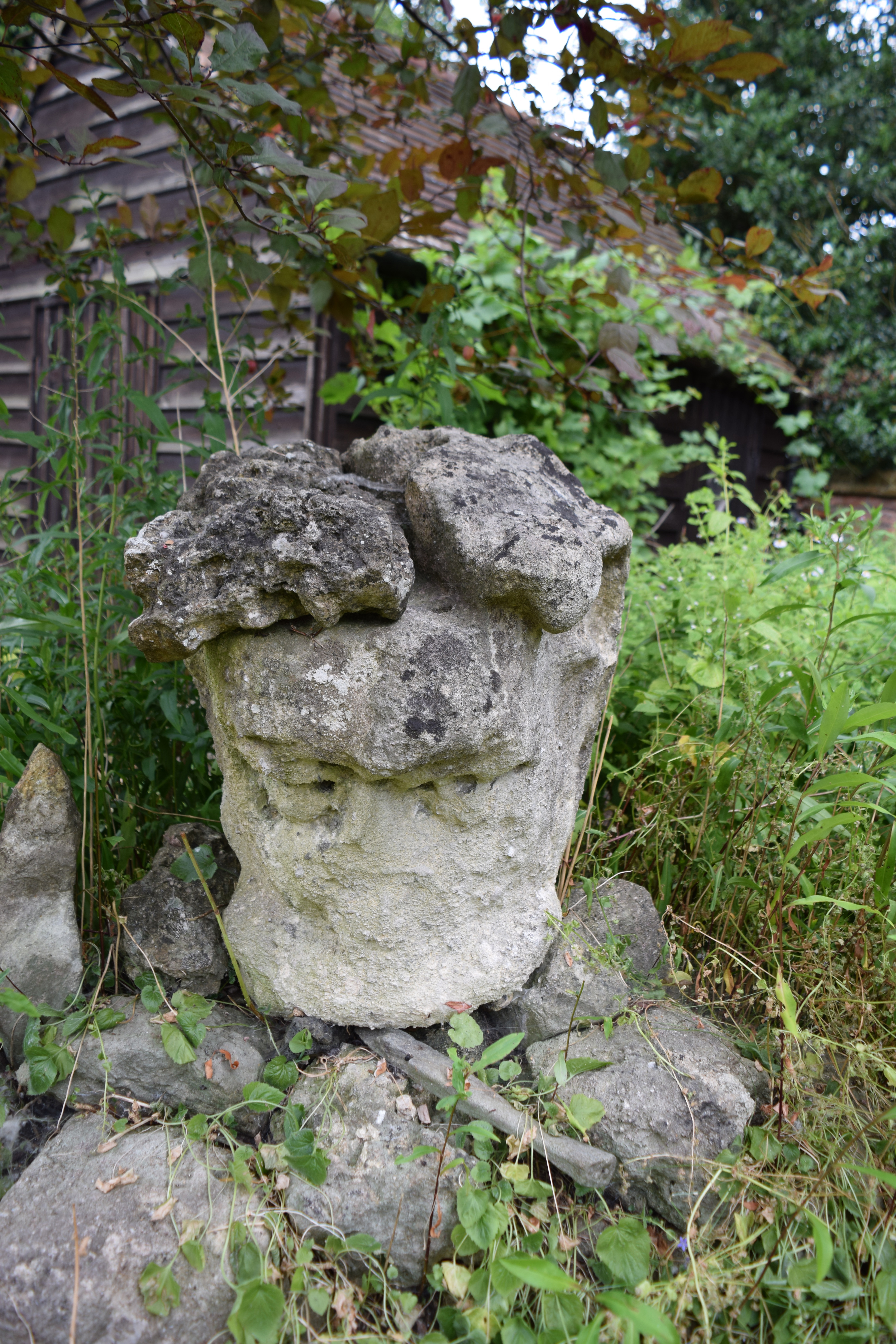
And here’s another. The photograph below was sent to me by Lisa Cowey. She took it in November 2019 at Harcourt Arboretum. It is a different head to the one I saw, so there must be at least two hiding there.
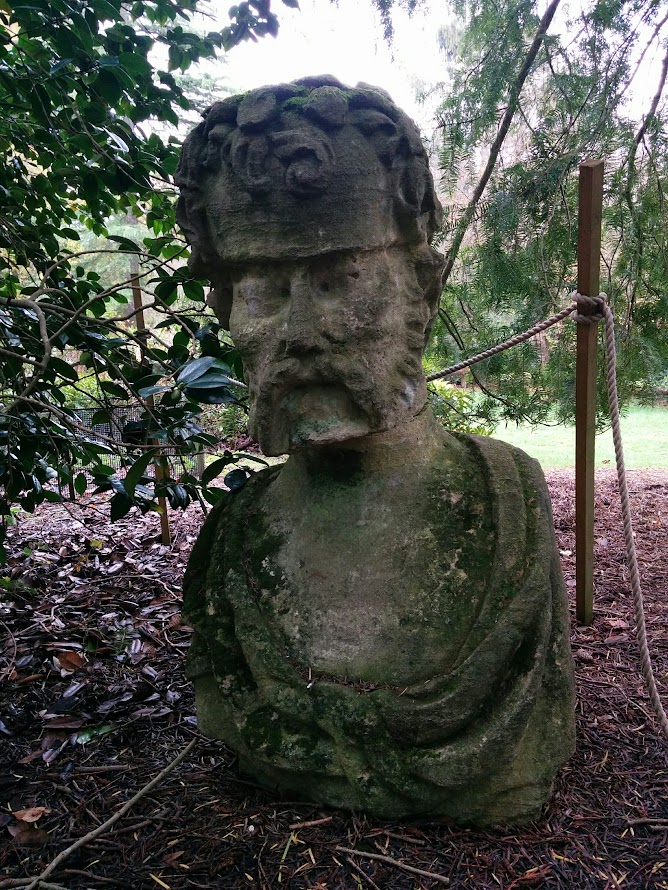
An exhibition about Michael Black opens on March 15 2025 at the Oxfordshire Museum in Woodstock. You can find out more details here.
You might also like to read The Stone Saints’ Retirement Home.
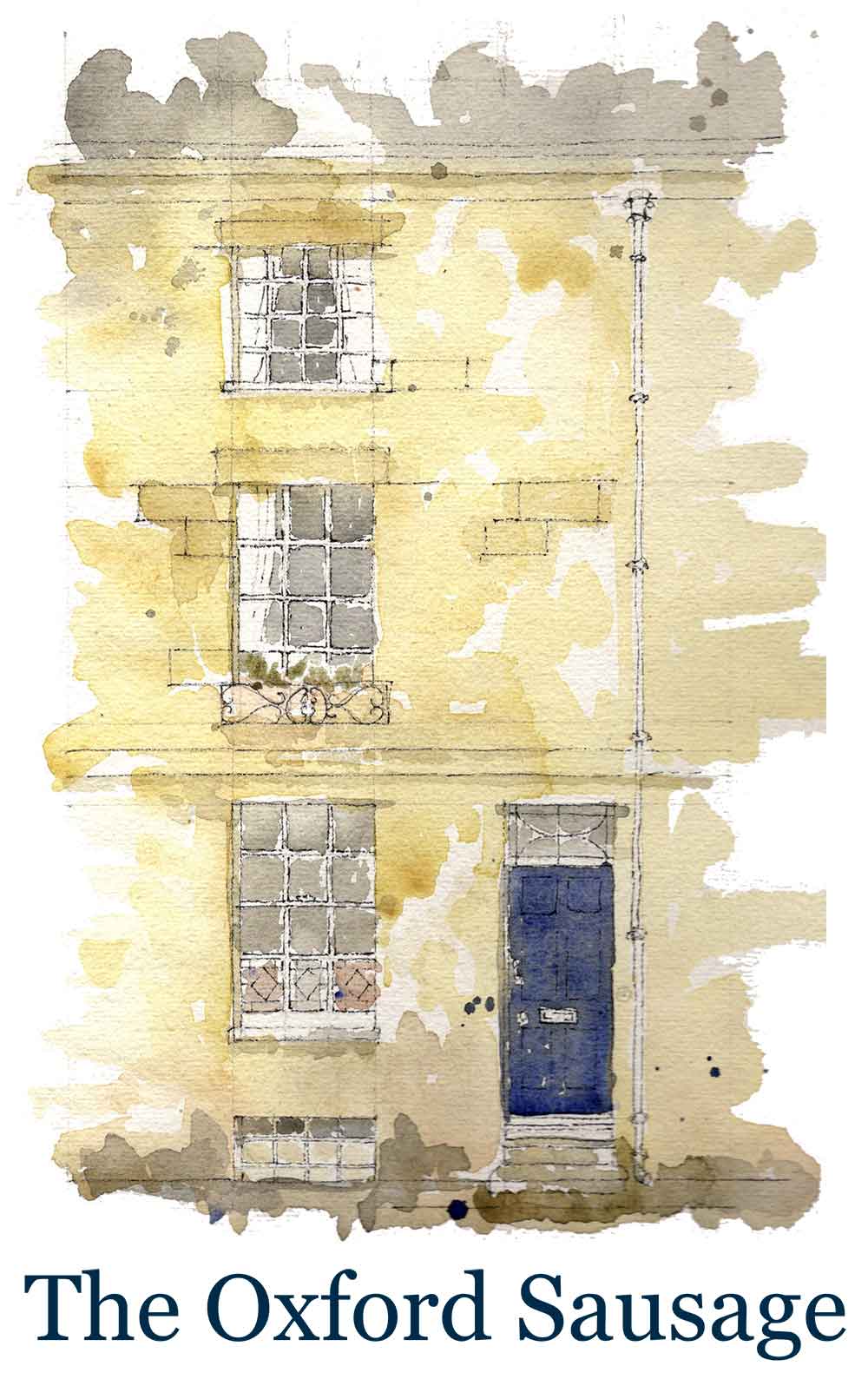
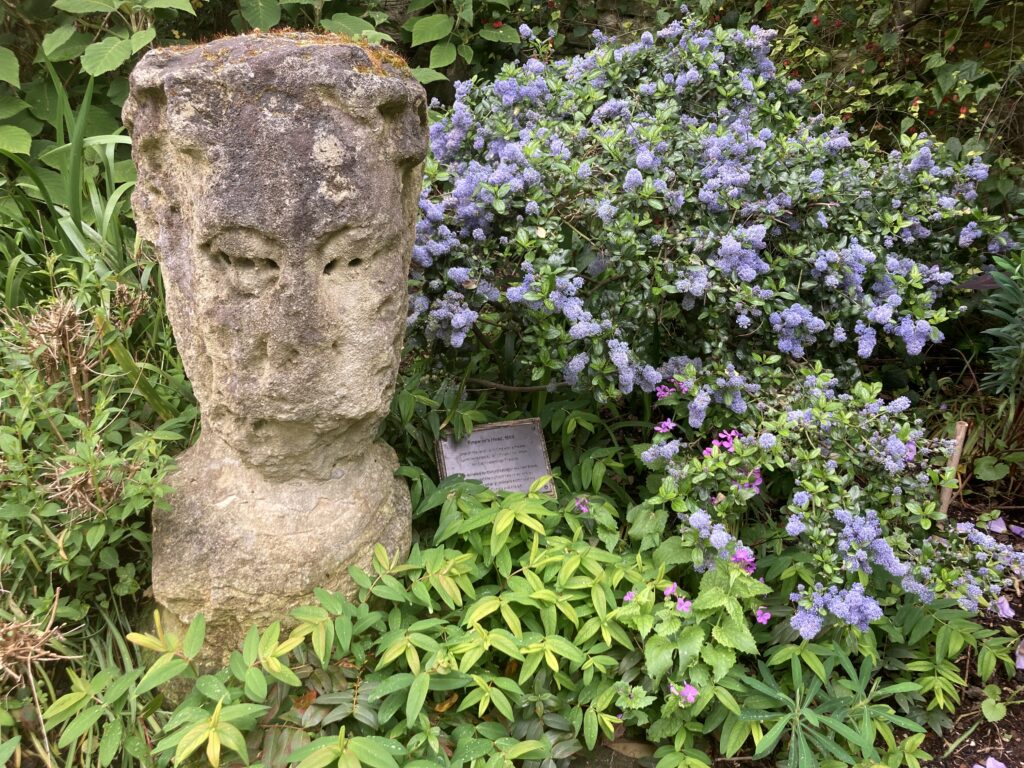
2 Comments
Join the discussion and tell us your opinion.
Superb sausage sleuthery
There are several lying on grass between Wytham woods carpark and the sawmill